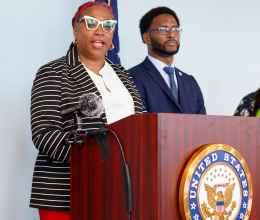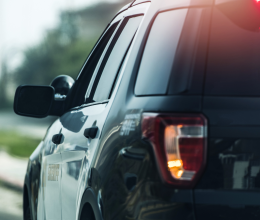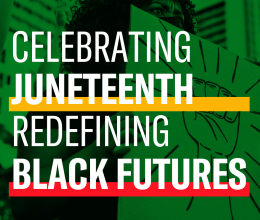Boston is a world-class city: a center for the arts and a hub of innovation. We benefit from two daily newspapers and two NPR stations. We have championship sports teams that win often enough to make us proud. We have the world’s best universities and a thriving start-up economy. We are fearless. We are strong.
Given this backdrop, it’s hard to understand why Boston is dragging its heels when it comes to smart policing reforms, notably body-worn cameras and data transparency.
Here’s a guiding principle: you cannot manage what you will not measure.
To be sure, there’s been a lot of self-congratulatory talk about how “Boston isn’t Ferguson,” a reference to protests that broke out in Missouri following the police killing of Michael Brown.
But that’s a pretty low standard; do we really want to wait for another person to be killed before we adopt sensible police reforms?
Rather than compare ourselves to Ferguson, we should look to Seattle, Austin, Memphis, and other major American cities that have successfully adopted or announced plans to adopt body-worn cameras. We can also look to other cities, as well as a draft ordinance before the Boston City Council, to identify appropriate privacy protections governing these cameras.
But what we should not do is wait for everyone else to pass us by. Of the 25 largest cities in America, only four – Jacksonville, Columbus, Nashville, and Boston – have yet to implement, pilot, or announce plans to try body cameras. The cities trying out body worn-cameras have correctly concluded that they increase trust between the community and police officers. Cameras provide crucial evidence to resolve disputes about police conduct, protecting both community members and police officers.
In some cases, such as the killing of Walter Scott in South Carolina and the shooting of Sam Dubose in Cincinnati, cameras have brought terrifying facts to light. In others, such as the killing of Angelo West in Roxbury, video has addressed community concerns about possible misconduct. In all cases, for both the community and the police, having an unbiased lens focusing on the facts was vital.
Instead, the real-world experience of other cities reinforces the effectiveness of body-worn cameras. In Rialto, California, implementing body-worn cameras led to a 60% reduction in officer use of force and an 88% reduction in the number of citizen complaints. And after cameras were introduced in San Diego, uses of force and civilian complaints also dropped dramatically (41% and 47% respectively). In Oakland, use of force incidents plunged 72% after adopting body-worn cameras.
Body-worn cameras also have strong public support. According to a recent poll, 90% of Americans support body-worn cameras for police. Support is strong in the law enforcement community as well. Former Boston Police Commissioners Ed Davis, Bill Bratton and Kathleen O’Toole support body-worn cameras. Former Springfield Commissioner Ed Flynn has also gone on the record in support of body-worn cameras for police.
It’s also clear that funding body-worn cameras for police officers is a worthwhile investment. Police departments across the country have seized unprecedented opportunities over the past year to get federal grants to help pay for both body cameras and training. Boston should, too.
Smart policing also requires greater data transparency.
In contrast to Ferguson, which adopted reforms only after a tragedy, Boston has hard data showing racially disparate treatment of Blacks and Latinos by Boston police officers. That, alone, should be enough to prompt reform.
Just last month, the Boston Police Department (BPD) released a report by academic researchers showing racial disparities that could not be explained away by “non-race” factors like crime or gang membership. Relying on data from 2007 to 2010, the report concluded that, when it comes to initiating encounters with civilians, BPD officers aren’t just drawn to crime and gangs; they also drawn to Black and Latino people. According to the researchers’ findings, a single Boston census tract that is 85% Black could expect over six hundred additional police-civilian encounters each year that are attributable solely to race. For Boston as a whole, that adds up to thousands of such race-based encounters each year.
Some public officials tried to downplay the report by suggesting that the “data is old.” But that’s disingenuous, since the data grew old only because the Boston Police Department took years to release it. When the report was finally made public, it happened in a midnight posting over a long July 4 holiday weekend. The technical term for this is “hiding the ball.”
On the bright side, the BPD reportedly has pledged to publish stop-and-frisk data annually. That’s a welcome promise. In practice, however, the BPD has spent the last 11 months dodging a public records request for stop-and-frisk data collected from 2010 to the present.
That is why on August 6, 2015, the ACLU of Massachusetts and national ACLU, together with the law firm WilmerHale, filed a public records lawsuit—ACLU of Massachusetts v. Evans—seeking to compel the BPD to turn over recent data on police-civilian encounters.
If, as the BPD states, they’ve fully addressed problems of treating Blacks and Latinos differently from whites, the data should reflect that fix. But if the data shows that the police have stopped filling out the police-civilian encounter forms, or if they won’t turn over the data, then there’s no reason to think Boston is any different than we were from 2007-2010.
After all, we cannot manage what we do not measure.
There’s no excuse for keeping Boston residents in the dark about policing practices. Body-worn cameras and data transparency are two straightforward policy reforms that will ensure that all police officers receive the highest levels of training and oversight—key ingredients to remaining a world-class city.
Carol Rose is executive director of the ACLU of Massachusetts.






